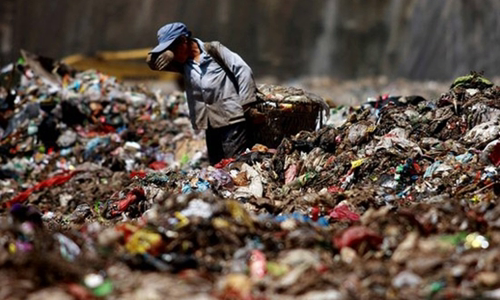The Jiangcungou landfill is as big as 100 football fields in Xi'an City, Shaanxi Province, which runs out of space before 25 years.
Jiangcungou is China's largest landfill, designed and built in 1994 to store waste until 2044. According to initial estimates, Jiangcungou will receive 2,500 tons of garbage per day, but the actual number has been up to 10,000 tons.

A worker at Jiangcungou landfill, Xi'an City, Shaanxi Province, China Photo: China Daily.
The landfill serves more than 8 million people, covers an area of 700,000 square meters, is 150 meters deep and can accommodate more than 34 million cubic meters of waste. Xi'an is one of the few cities in China that only has a single disposal option, which is landfill, resulting in Jiangcungou running out of storage 25 years earlier than planned.
The city opened a waste incinerator earlier this month and expects to put at least four more to use by 2020. These projects are expected to handle 12,750 tons of waste.
The move is part of a national plan to reduce the number of landfills and switch to other waste treatment methods such as incineration. The landfill in Xi'an City is expected to become an "eco-park" later.
In 2017, China collected 215 million tons of household waste, an increase of 63 million tons compared to 10 years ago. Of which, 120 million tons were buried and 84 million tons destroyed. The world's most populous country now has 654 landfills and 286 incinerators.
China is the world's largest emitter of greenhouse gases, which is thought to be one of the main causes of global warming. The country has launched a campaign to protect the environment and modernize the economy to reduce emissions and clean the environment.
Shanghai, the most populous city in China, has been at the forefront of making initiatives in the fight against waste, which requires people to separate their waste if they do not want to be fined.



 KaylaGundermann
KaylaGundermann







